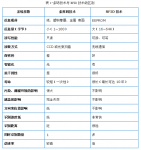
RFID technology warehouse management system solution
[ad_1]
1. Project overview
Warehouse management occupies an important position in the supply chain system. With the rapid development of the Internet and information technology and the upgrading and transformation of the manufacturing industry, higher requirements have been put forward for warehouse operations and internal inventory management.
1.1 Problems with traditional warehouse management:
1) The operation of personnel entering and exiting the warehouse is chaotic, and the loss of goods is high, and it is easy to send wrong goods and lose goods;
2) The inventory report is not timely;
3) The attributes of warehouse goods are not clear;
4) The stacking is chaotic and the picking efficiency is low;
5) Inventory efficiency and accuracy are low;
6) High labor cost;
Traditional one-dimensional code and two-dimensional code technology can realize the classification and management of items. However, because barcode technology relies on visible light scanning and reflection recognition, the recognition rate is low, the speed is slow, and it is sensitive to media such as water and oil, easy to be damaged and stained, and the information storage capacity is limited.
As a new automatic identification technology, RFID uses radio frequency signals to identify objects. It has the advantages of high recognition accuracy, reliable performance, large amount of information in storage, and resistance to oil and sewage washing. It can meet the needs of automatic identification in extreme working environments. . It has a significant effect on the improvement of warehouse management.
1.2 Goals of IoT warehouse management
The Internet of Things warehouse management system is adoptedRFID, Sensors, computers, and other Internet of Things information technologies can realize a series of automated operations such as automatic identification of warehouse materials and real-time accurate inventory control. The concrete realization of the upgrade and transformation of the existing warehouse:
1) Non-contact automatic identification of the attributes of warehouse materials;
2) Accurately identify the quantity of warehouse materials;
3) Realize all-round real-time management of the warehouse material allocation process;
4) Improve the accuracy and efficiency of inventory;
5) Real-time upload, update and management of warehouse material data;
6) Accurate positioning of the storage location of warehouse materials;
1.3 Advantages of applying RFID technology to warehouse management


2. System introduction
2.1 Objects of IoT warehouse management:
(1) Warehouse items;
(2) Storage location;
(3) Warehouse management equipment.
2.2 Basic principles of the system
1) Assign RFID tags with unique IDs to each item, pallet, storage location and management equipment.
2) RFID readers, infrared detectors, LED displays, and alarms are installed at the entrance and exit of the warehouse.
3) The warehouse is equipped with an RFID trolley or forklift system, and the inventory personnel are equipped with RFID handheld readers.
2.3 System hardware composition
RFID warehouse management system, the main hardware equipment includes: RFID electronic tags, RFID handsets, fixed readers, RFID label printers (can print barcodes), PC clients, WEB servers, database servers, etc. The system framework is shown in Figure 2:

Figure 1-RFID warehouse management system framework
2.4 System software function
Software system functions: label issuance, warehousing management, inventory counting, item location query, anti-theft alarm and other functions, as shown in Figure 2:

Figure 2-RFID warehouse management system functions
3. The value of implementing IoT warehouse management
(1) Reduce the cost of information collection;
(2) Realize warehouse automation management and improve work efficiency;
(3) Reduce management costs and reduce human errors;
(4) Precise control of purchase, sale and storage;
(5) Quickly respond to customer needs and expand sales;.
(6) Enhancing partnerships with partners;
(7) Facilitate unified management of multiple warehouses;
(8) Facilitate first-in first-out management;
(9) Improve the efficiency and accuracy of the management of frequent in and out of warehouse goods.
[ad_2]



